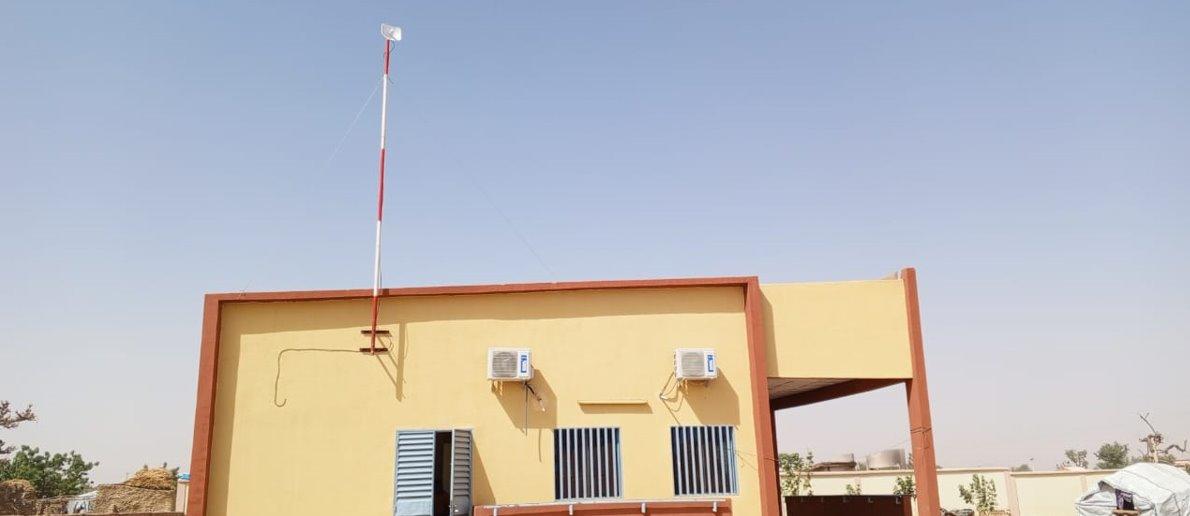
Objectives of the service
In environments with significant connectivity challenges caused by unreliable infrastructure or the absence of terrestrial networks, humanitarian organizations struggle to carry out their missions and support the emotional, psychological, social, and economic well-being of displaced individuals and local communities.
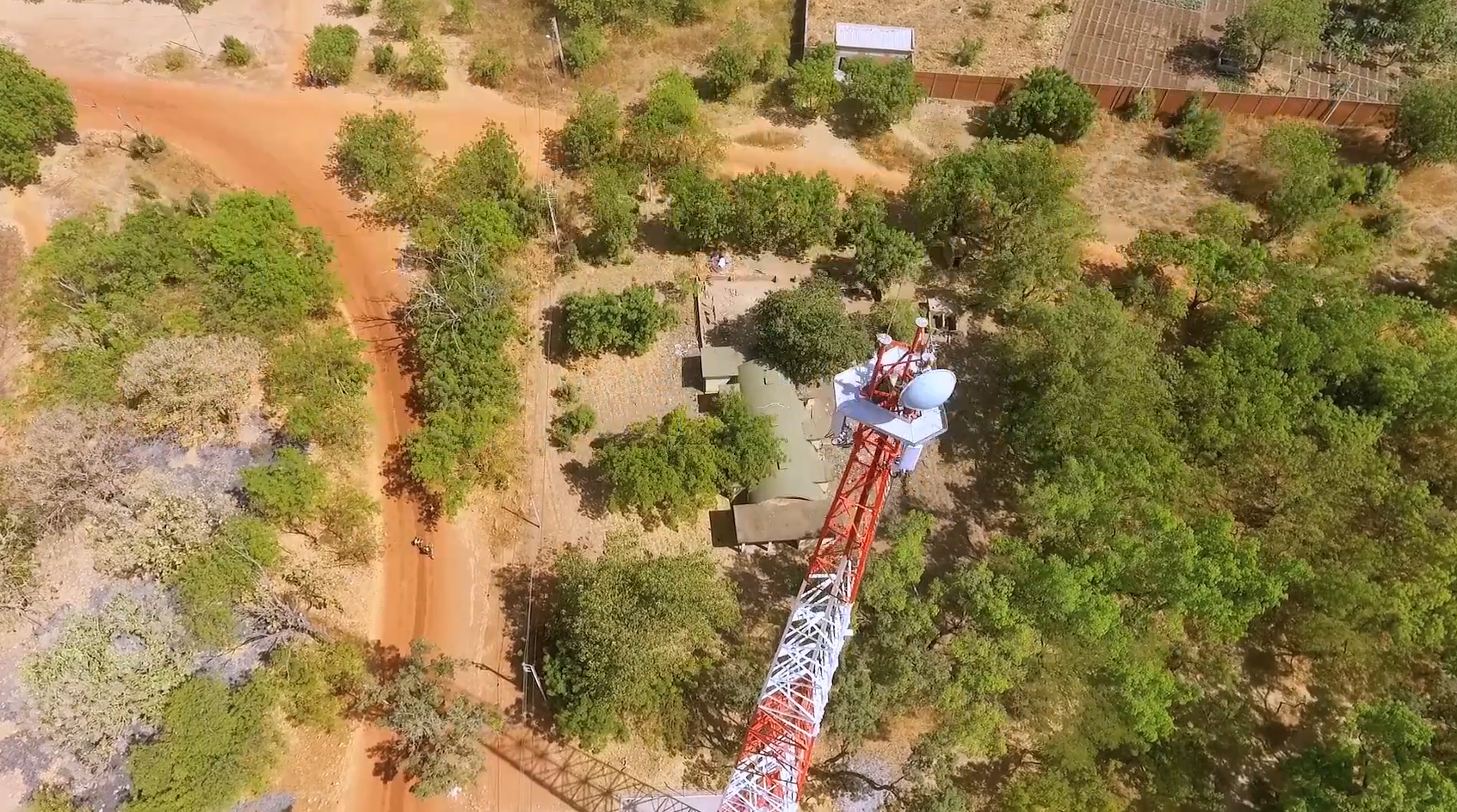
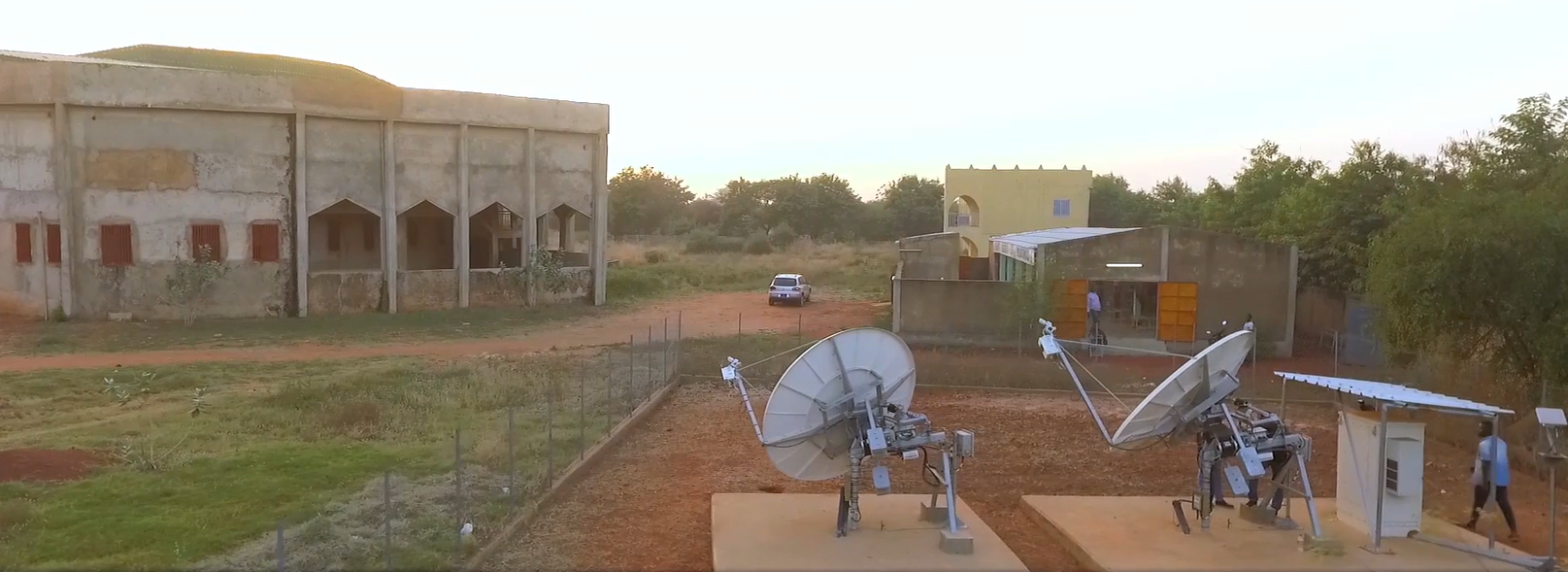
To tackle these challenges, the service implements a reliable, independent, and high-performance communication system enabling humanitarian actors to predict, respond to, and manage crises more effectively. This solution provides IP-based services to support displaced individuals and local communities while enhancing the working conditions of humanitarian staff.
This project was conducted in the Seno province of Burkina Faso, situated within the broader Sahel region, which exemplifies these challenging conditions. In recent years, the area has experienced a significant decline in security, resulting in unreliable local terrestrial networks due to frequent congestion and vandalism.
Users and their needs
The users of this service are the staff of humanitarian organizations operating in areas with unreliable connectivity. Their needs and requirements were identified based on direct input from humanitarian actors in the operational field in Dori, Burkina Faso.
Humanitarian organization offices require a reliable, independent, and high-performance communication system to perform their work efficiently and to attract and retain qualified staff locally. The connectivity equipment must be compact, easy to install, and unobtrusive. Each office also requires a solar power system to remain independent of the unreliable electricity infrastructure, as well as additional laptops, since only registered devices can access the network.
Furthermore, the network administrator must have the ability to monitor all network components to quickly detect and address any service outages.
Service/ system concept
To meet user requirements, the communication system is designed around SES's O3b advanced satellite system in Medium Earth Orbit (MEO), combined with a wireless distribution network. Solar power serves as the prime energy source ensuring the system operates independently of existing infrastructure.
At the remote site, the O3b station receives and transmits signals to and from the O3b satellites. The exit to the Internet happens at the O3b Gateway, which is connected to the global Internet network. Locally, the bandwidth enabled by the O3b station is distributed using a point-to-multipoint Base Transceiver Station (BTS).
Each user premise is equipped with a small (Ø = 19 cm), lightweight (0.5 kg), easy-to-install, and unobtrusive Wireless Customer Premises Equipment (CPE) and a Wi-Fi Access Point (AP). End users can access online humanitarian applications and surf the Internet with any IP-enabled device equipped with Wi-Fi capabilities, such as laptops, tablets, or mobile phones.
The network management is divided between a local network administrator, providing first-level support (in this demonstration project, the role was performed by CRBF), and SES, which handles escalations.
Specifically, the system of the demonstration project deployed in Dori consists of the following elements:
-
SES MEO satellites
-
A MEO station in Dori equipped with solar panels
-
A Wireless BTS for local bandwidth distribution
-
The O3b Gateway located in Europe
-
Eleven humanitarians' offices, each equipped with wireless CPE, WiFi Access Points, two laptops and a small solar kit
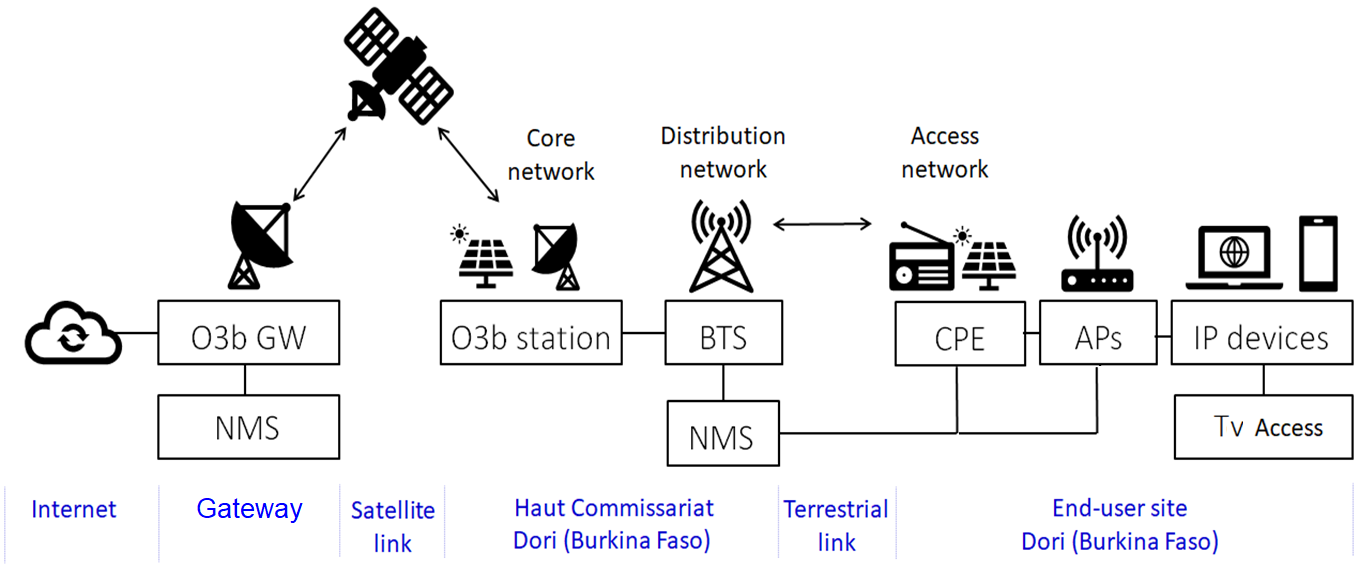
Space Added Value
The SES MEO satellites operate at an altitude of 8,062 km in Medium Earth Orbit (MEO) and utilize the Ka-band spectrum for uplink and downlink connectivity. The current O3b constellation comprises 20 identical satellites, each providing beams with a 700 km diameter. These beams can be dynamically repositioned to cover any location within the system’s coverage area.
Key features of SES’s MEO technology include:
-
Secure and Independent Communication
In regions where users frequently face connectivity congestion and shutdowns, SES’s MEO satellite link guarantees reliable performance. This enables humanitarian actors to carry out their critical tasks effectively.
-
Low Latency for Fibre-Like Performance
O3b satellites, positioned in MEO, minimize round-trip transmission time to around 150 milliseconds. The lower latency enhances the performance of real-time applications such as VPN, VoIP, and other enterprise or government applications.
-
High Throughput
Each beam can support extraordinarily high throughputs of over 1 Gbps per beam.
-
Affordability and Scalability
SES’s IP Transit Service offers cost-effective solutions. The system’s scalability provides a flexible, affordable option to meet growing market demands.
-
Reduced Downtime
SES’s satellite constellation combines full in-orbit redundancy with a fully redundant ground network architecture, ensuring unparalleled reliability and minimizing service disruptions.
Current Status
The SENO pilot successfully achieved its goal of delivering a reliable, independent, and high-performance communication system tailored to the needs of humanitarian actors.
Conducted over several months in Dori, Burkina Faso, the demonstration project benefited nearly 1750 users. It facilitated approximately 43,000 hours of application usage, such as videoconferencing and email, and enabled humanitarians to identify over 4,400 individuals in need of assistance. Additionally, the system helped reconnect more than 100 displaced people with their families.
A Project ECHO/APP CRBF user shared his experience: “The VSAT connection has a very good throughput, we no longer have any difficulties in transmitting our reports and data collection. Software like Microsoft365, Outlook, TEAMS, OneDrive, requires a good connection. I had always heard about online meetings, and it was a great experience for me to finally benefit from these while in Dori – connecting with colleagues in Kongoussi, Fada and Ouagadougou.”
Based on the market demand, SES can now deploy this type of innovative solution globally.
